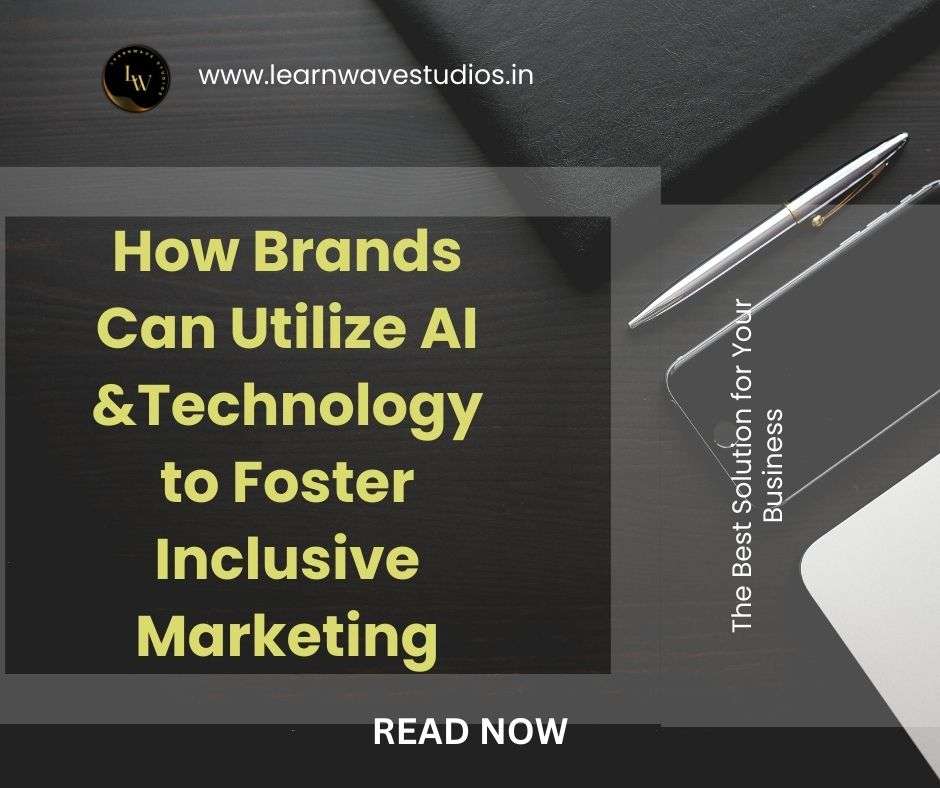How Brands Can Utilize Artificial Intelligence – AI and Technology to Foster Inclusive Marketing
In today’s marketing landscape, the fusion of artificial intelligence (AI) and technology has revolutionized the way brands engage with their audiences. However, for marketing to be truly impactful, it must be inclusive, reflecting the diverse perspectives and experiences of consumers. In this blog post, we’ll explore how brands can harness the power of AI and technology to create marketing campaigns that resonate with and represent a broad spectrum of individuals.

Understanding Inclusive Marketing
Inclusive marketing goes beyond simply targeting diverse demographics; it aims to authentically engage and celebrate the unique attributes and values of all individuals. By embracing inclusivity, brands demonstrate a commitment to understanding and respecting the diversity of their audience.
Leveraging AI and Technology for Inclusive Marketing
1. Data-Driven Insights: AI can sift through vast amounts of consumer data to extract insights into diverse consumer behaviors, preferences, and cultural nuances. This allows brands to tailor their marketing strategies to align with the specific needs and aspirations of various groups. For example, a fashion brand could use AI to identify emerging fashion trends specific to different cultural communities and leverage this insight in their marketing campaigns.
2. Personalized Content Creation: AI-powered tools enable brands to create highly personalized marketing content that resonates with diverse audience segments. Machine learning algorithms can analyze consumer preferences and behaviors to generate customized messaging and imagery, ensuring that marketing materials speak to the unique identities and experiences of individual consumers.
3. Inclusive Language and Imagery: Natural language processing algorithms can be employed to examine marketing content for inclusive language and representation. By ensuring that promotional materials are free from biased language and imagery, brands can build trust and connection with a wider audience. For instance, AI can provide real-time feedback to marketers, flagging instances of exclusionary language and recommending alternative, more inclusive phrasing.
4. Targeted Outreach: AI-driven analytics can identify and reach underserved consumer groups that traditional marketing strategies may overlook. This may involve utilizing granular demographic and psychographic data to craft highly targeted outreach efforts, ensuring that the brand’s message resonates with individuals from diverse backgrounds.
5. Accessibility and User Experience: Brands can implement AI-powered accessibility features to ensure that their digital marketing assets are easily accessible to individuals with disabilities. For instance, AI-driven alt-text generation can describe images for visually impaired users, while voice recognition technology can enhance the usability of digital interfaces for individuals with mobility impairments.
Successful Examples of Inclusive Marketing Utilizing AI and Technology
1. Starbucks: The coffee giant employs AI to personalize its mobile app interface, making it more accessible to users with varying preferences and needs. By analyzing purchasing patterns and user behaviors, Starbucks delivers tailored recommendations and promotions, enhancing the inclusivity of its marketing efforts.
2. Procter & Gamble: P&G utilizes AI to curate diverse and inclusive imagery in its marketing campaigns. By analyzing stock photo libraries using facial recognition and sentiment analysis, P&G ensures that its advertising materials are representative of diverse identities and expressions.
3. Microsoft: Through AI-driven language processing, Microsoft has optimized the inclusivity of its marketing content. The company uses natural language processing algorithms to flag and rectify instances of exclusionary language, ensuring that its messaging is respectful and welcoming to all individuals.
In Conclusion
By leveraging artificial intelligence and technology, brands can establish a foundation for inclusive marketing that authentically resonates with diverse audiences. Through data-driven insights, personalized content creation, inclusive language and imagery, targeted outreach, and improved accessibility, brands can craft marketing strategies that foster a sense of belonging and representation among their consumer base. The successful implementation of these strategies not only fosters positive brand-consumer relationships but also drives a positive societal impact, paving the way for a more inclusive and diverse marketing landscape.

